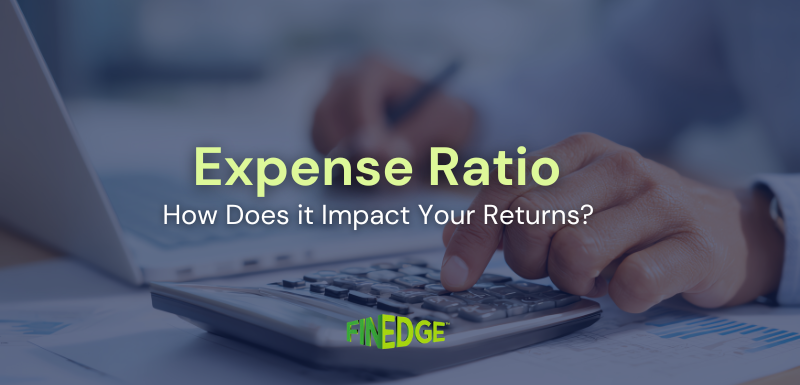Investing Insights
What Is an Expense Ratio in Mutual Funds and Why It Matters
Understanding the mutual fund expense ratio helps you see the real cost of investing, and how even small differences can quietly shape your long-term returns.
Equity Savings Funds: The Perfect Blend of Safety, Growth, and Tax Efficiency
In a market where investors want growth without volatility, Equity Savings Funds offer a disciplined middle path. They combine the growth potential of equities, the stability of debt, and the hedging benefit of arbitrage funds. For conservative investors seeking low-risk mutual funds with mutual fund tax efficiency, these schemes offer stability, discipline, and clarity core principles of FinEdge’s goal-based approach.
ULIPs vs Mutual Funds for Wealth Creation: Which is Better?
ULIPs combine insurance and investment, while mutual funds focus purely on returns. For wealth creation, separating the two is almost always better.
Balanced Advantage Funds (Dynamic Asset Allocation Funds): Meaning, Returns, and Taxation
Balanced Advantage Funds, also called Dynamic Asset Allocation Funds, dynamically manage equity and debt exposure to provide a balance of growth potential and downside protection.
What is a Flexi Cap Fund? Meaning, Returns, Benefits & Taxation
Flexi cap funds offer investors the freedom of dynamic allocation across large, mid, and small caps. Learn their meaning, performance, taxation, and suitability before investing.
What Are Large-Cap Funds? Risks, Returns, and Should You Invest?
Large-cap funds are the foundation of most equity portfolios. They may not deliver overnight riches, but they provide stability, consistency, and peace of mind for long-term wealth building.
What Are Mid-Cap Funds? Risks, Returns, and Should You Invest?
Mid-cap funds are often called the “sweet spot” of equity investing offering higher growth than large caps with lower risk than small caps. Here’s how they work, their pros and cons, and whether they suit your portfolio.
What Are Small-Cap Funds? Risks, Returns, and Should You Invest?
Small-cap funds are known for their ability to deliver extraordinary returns over time. But with high growth potential comes equally high risk. Here’s a clear look at how they work, their pros and cons, and whether you should invest in them.
Mutual Fund vs. Fixed Deposit Returns Over 10 Years: The Data Speaks
Fixed deposits promise safety and certainty, while mutual funds offer growth and wealth creation. But when you look at 10 years of data, the difference in outcomes is striking, especially once inflation and taxes are considered.
How to Invest a Lump Sum Amount Smartly: A Goal-Based STP Approach
A sudden lump sum can feel overwhelming; STPs help you invest it smartly, reduce risk, and align it with your goals.
How To Select The Best Mutual Funds For Long Term Goals
Mutual funds offer a compelling way to invest for long-term goals, leveraging professional management and diversification to potentially achieve significant returns. But with a vast array of options available, selecting the best mutual funds for the long term can feel daunting. This guide will equip you with the knowledge to confidently navigate the mutual fund landscape and learn how to select the best mutual fund aligned with your long-term aspirations.
Should You Continue Your SIP in Small Cap Mutual Funds
Investing in small cap funds requires patience and discipline, especially during market corrections. By staying committed to your SIPs and focusing on long-term goals, you can leverage the power of rupee cost averaging and compounding. Don’t let short-term market noise dictate your strategy—remain focused, stay the course, and trust that your disciplined approach will yield results over time.
Latest Posts
The Impact of Inflation on Your Retirement Plan
Dec 15, 2025
Responsible Credit Card Usage: Three Principles Every Consumer Should Follow
Dec 12, 2025
FinEdge App: Invest With Clarity, Stay Disciplined, Achieve Your Goals
Dec 08, 2025
Understanding the Financial Planning Pyramid: Building Your Finances the Right Way
Dec 08, 2025
Personal Finance Ratios You Should Understand Before You Start Investing
Dec 05, 2025
The Importance of your Child’s Education Goal
Feb 28, 2024
Why Retirement Planning is Important
Nov 08, 2023
Oct 31, 2023
Investing Behaviour and the investing roller coaster
Oct 12, 2023
Investing Stories

.png)

.png)

.png)

.png)









.jpg)
_(1)1.jpg)
.jpg)
.jpg)
.jpg)